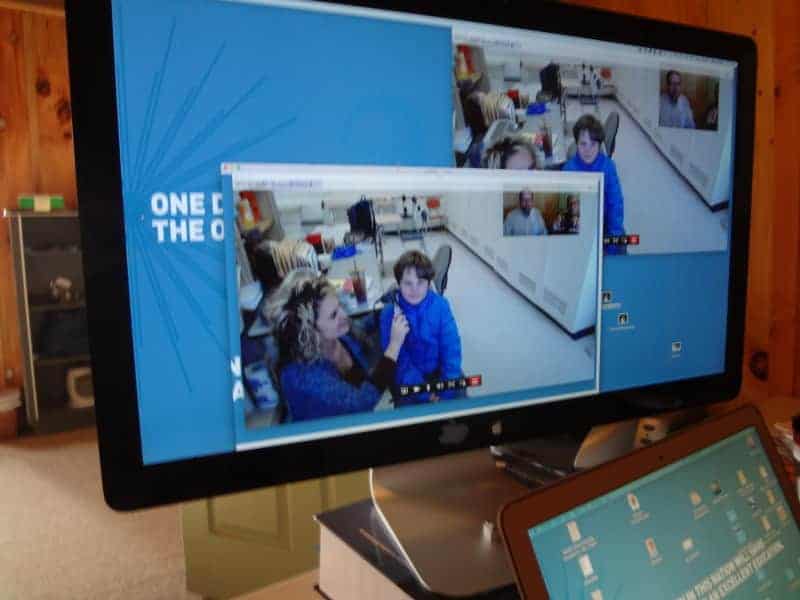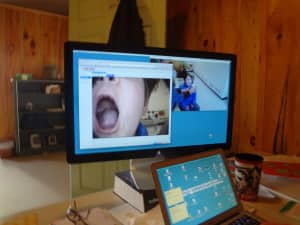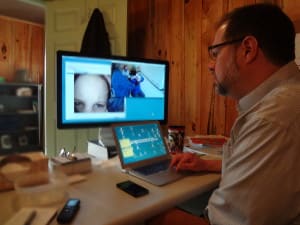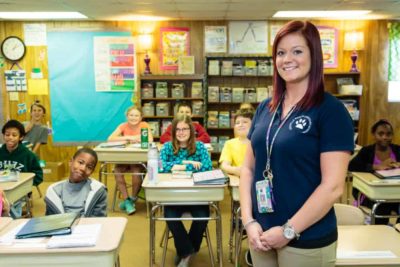

It was the teacher in Steve North who connected the dots.
North, a Wisconsin native, was fated, it would seem, to be a doctor. His father was one, and folks always said he himself had what it takes to be a good one.
But the instinct to serve led him first in another direction, to the classroom. In 1993, North took a position with the Teach For America program in eastern North Carolina’s Edgecombe County.
“I saw the issues my students had accessing health care and how it impacted their focus in class … and also their attendance,” he said.
He saw kids with undiagnosed illnesses and unhealthy habits. Or sometimes the concerns were more immediate: North recalls a student who had stepped on a rusty nail and his family had been unable to get him to a doctor.
“It’s really hard to focus on whatever I might be teaching when you’ve got a festering wound,” he said.
That two-year experience led North back to his destiny, in medicine, and to where he is today, founder, president and medical director of the Center for Rural Health Innovation. The center is a Spruce Pine-based nonprofit launched in 2010 to administer MY Health-e-Schools, a program providing school-based telehealth services in three largely rural Western North Carolina counties.


MY Health-e-Schools uses high-definition videoconferencing with specially equipped medical instruments and cameras that allow a health care provider to examine students without leaving the office. The provider then coordinates follow-up care with primary care physicians, mental health care providers or other practitioners as necessary.
“My interest is in this integration into the school,” North said, “so that we’re addressing the whole kid and doing risk screenings to look at high-risk behaviors and then getting them to the right resources.”
The visit
A virtual visit to the MY Health-e-Schools office is not so different from the traditional visit to a doctor’s office, but kids often find the experience to be more comfortable. A parent or guardian can come to the school to join them.
Parents are encouraged to enroll their kids in the program at the beginning of the school year; consent is required before a child can be seen. Billing works just as it does in the traditional model. The program accepts Medicaid.
On a recent Tuesday afternoon, North is networked into Deyton Elementary in Spruce Pine. Lacey Jones, a MY Health-e-Schools program coordinator for Mitchell and Yancy counties, is at Deyton to help facilitate the session. Most often though, school nurses serve in that role.
North has an otoscope and a camera at his control. He can also listen to the heart and lungs through a remote stethoscope that the nurse moves at his instruction, and record those sounds. Since he can’t physically examine the body, he asks more questions than he might otherwise. The nurse will check lymph nodes or other areas that might require a little probing.
Of course, a kid falling off the monkey bars and breaking an arm isn’t a case for the MY Health-e-Schools practitioner. Schools have their own emergency protocols.
What the program aims for, said Amanda Martin, the Center for Rural Health Innovation’s executive director, are “things that kids leave school for and don’t come back, but they’re not that sick; they could go back to class.”
But when a parent has to pick up the child for a doctor’s appointment, then bring him back to school, only to pick him back up two hours later, odds are the kid will miss the rest of the day.
MY Health-e-Schools strives to keep kids in school if it’s possible and prudent, meanwhile learning more about the child and building long-term relationships.
Saving a day
One such kid is Michael Robertson, 13, a seventh-grader at Harris Middle School in Spruce Pine. Michael has had a heart murmur since birth and last February had blood pressure issues. He visited a cardiologist in Asheville, about 50 miles away – a trek for the family, meaning missed school and work, plus travel expenses.
Then they learned that Michael could follow up via MY Health-e-Schools.
“He loves it,” said his father, Chad Robertson. “The experience is incredible. With this technology, they can look in your ears, down your throat, hear your heartbeat. They’ve got everything right there and you’re looking right at the doctor.”
Michael is in and out of his session in 30 minutes or less. “Instead of him missing a full day, he only misses part of a class,” Robertson said.
Michael hasn’t yet had to return to Asheville. “It’s a huge savings,” said his dad.
North and his colleagues hope to find money and resources to study the benefits of MY Health-e-Schools on performance, attendance and the extent to which the program curtails the need for more expensive services.
A study of inner-city child-care centers conducted by the University of Rochester found that telehealth reduced absences due to illness by 63 percent. Another University of Rochester study determined 28 percent of visits to a pediatric emergency department could have been avoided with telehealth.
A different approach
North attended medical school at UNC-Chapel Hill, then did a residency in family practice at the University of Rochester, where he gained experience in school-based health centers.


At that time, Neil Herendeen in the University of Rochester Medical Center’s department of pediatrics had begun using telemedicine to connect to Head Start centers and kindergarten classrooms for acute health issues.
North was impressed, but had a different model in mind, one that would involve health counseling, examining behavioral health issues and building long-term relationships with kids.
His wife, Jennifer Larson, also a physician, is a Spruce Pine native and wanted to return to the area. Here North found the place to realize his ambitions: a rural, remote region with a physical terrain (and winter weather conditions) that can make travel difficult, and thus a considerable need for easier access to health care services.
Throughout his first five years in Mitchell County, he saw patients in two very rural communities, Buladean and Tipton Hill, up the Unaka Range near the Tennessee border, about 45 minutes from Spruce Pine on a “good day,” according to North. There he did community clinic work with a focus on K-5 schools, until the schools where he was working closed due to a shortage of students.
At the same time, in 2007, North was selected for a fellowship through the N.C. Foundation for Advanced Health Programs that allowed him to spend two years developing the idea of a school-based health network, learn more about telemedicine and assess his community’s needs.
Equally important was building community support. “You’re changing both how you deliver health care and where you deliver health care,” North said.
“Because I had been in Tipton Hill and Buladean, and was really showing an interest in those schools, and showing up, I think that they were more receptive to the idea.”
North emphasized that any program has to be community driven.
“One of the fundamental tenets of comprehensive school-based health care is reflecting the values of the community in what you do,” he said.
MY Health-e-Schools was initiated in three schools in Mitchell and Yancey counties in 2011. It expanded to 10 schools the next year, then to 14 the third year. This summer, the program received nearly three-quarters of a million dollars from the Duke Endowment through Mission Health’s Center for Telehealth, allowing it to expand into McDowell County. This doubled the number of kids they’re reaching, from about 4,000 to 8,000, in 22 rural schools. That same funding will allow for growth to a fourth district next year.
MY Health-e-Schools now employs a full-time family nurse practitioner who sees students via the teleconferencing network from her office in Marshall, in Madison County.
The program also offers telepsychiatry visits with Mission Health practitioners.
‘An amazing thing’
North and Martin would like to see the MY Health-e-Schools network extended statewide – not necessarily administered by the Center for Rural Health Innovation, rather, “It’s more that we’d like to see school-based health care grow and happen in more places, serve more kids, but in what we consider to be the right way: in this comprehensive way,” Martin said.


CRHI also has received grant money to pursue a different telehealth project: They plan to open a telemedicine unit with a medical assistant in Tipton Hill where patients can come to connect with primary care physicians throughout the area.
Meanwhile, North is a busy man. In addition to his CRHI duties, he has a family medicine practice in Spruce Pine and is a medical director at the Mission Center for Telehealth. (His wife is chief of staff at Blue Ridge Regional Hospital and practices at the Blue Ridge Medical Center in Spruce Pine.)
“Rural physicians already are an amazing thing,” Martin avowed. “But to be a rural physician who says just me bringing my wonderful self to this community to practice isn’t enough and I’m going to find ways to do even more … I just think we’re really fortunate in this community to have Steve working as hard as he does to make this happen.
“It’s pretty amazing to see it grow.”
“I think telehealth in a variety of forms is going to be the driver of change in the health care industry,” North said. “And the goal is to make sure that whatever awesome idea is out there, it’s integrated into a primary care medical home, somebody who follows that patient from day to day to day.”
This story originally appeared in North Carolina Health News and is shared by EdNC through a content-sharing agreement with nonprofit news organizations in North Carolina.




